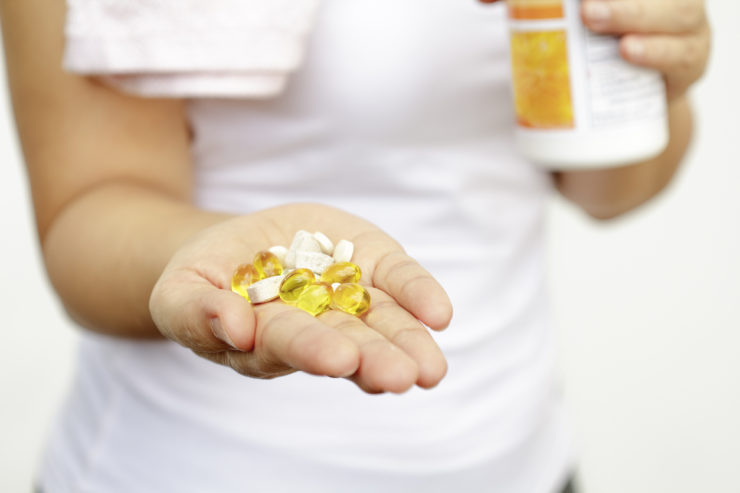ATC 271: Fuelling for a Double, Hill Training 101, Should Kids Take Supplements, MAF on Limited Time, and more!
October 12, 2018Sponsor:
 This episode is brought to you by Generation UCAN Superstarch, the incredible fuel of choice for endurance athletes and health enthusiasts looking for burn more fat for fuel, optimize sports performance and keep blood sugar in check. EP fans get 15% of UCAN, shop now. You can also use the code “enduranceplanet” if you’re shopping at generationucan.com for that 15% discount. Join the revolution. You can burn more fat for fuel. Oh, and be sure to check out the UCAN bars with peach and also another flavor with coffee beans for an added kick!
This episode is brought to you by Generation UCAN Superstarch, the incredible fuel of choice for endurance athletes and health enthusiasts looking for burn more fat for fuel, optimize sports performance and keep blood sugar in check. EP fans get 15% of UCAN, shop now. You can also use the code “enduranceplanet” if you’re shopping at generationucan.com for that 15% discount. Join the revolution. You can burn more fat for fuel. Oh, and be sure to check out the UCAN bars with peach and also another flavor with coffee beans for an added kick!
In this 271st episode of Ask the Coaches, Brock Armstrong and Lucho answer these listener questions and chat about their own training and racing. Lucho shares his enthusiasm for the Murph Crossfit workout (1 mile run, 100 pull-ups, 200 push-ups, 300 squats, and 1 mile run). Both Brock and Lucho agree that strength training and track workouts offer a lot of benefits to endurance athletes by developing more well-rounded fitness, improving technique, and mixing training up.
Lisa asks:
I was hoping you could give me some fuelling advice. In particular, in between two races on the same day. First I have a Championship 5k at 9 am and then a (less important) 10k at 11:15 am. So, I don’t have long at all really. I will finish my 5k, grab my checked bag and order an Uber to the next race.
I’m going to bring a bottle of water with Nuun and an endurance tap gel… But should I bring some protein? Some kind of gluten-free bread sandwich? The last thing I want is to feel starving during the 10k or get a cramp. But I know I should have something in between. Before the 5k I would have a piece of gluten-free bread with peanut butter and banana. I’ll sip on water with Nuun on my way there. Then I’m lost!
The coaches say:
- What it will come down to is simply not feeling hungry. Nothing you eat in between is going to “fuel you” for the race. Fitness trumps nutrition!
- Neither distance is going to even put a dent in your glycogen stores, so, physiologically, you won’t need to eat anything, but psychologically you will want something.
- Protein is optional but I would keep it to the minimum (fat too) since it takes the longest to digest and convert into energy.
- Best food choice: 1/2 a banana and a carby Nuun (most of their products have no carbs, so check to make sure the one you choose does).
- As always, stick with foods you know, and practice your fueling plan before race day (which in this case is pretty easy to simulate).
- Don’t worry about electrolytes either, maybe after the 10k but not between. No way you will deplete those in a 5k. Not even if it is 90ºF 😉
- It’s been largely debunked that cramping results from depleted electrolytes. Cramping is most often caused by pushing harder than you’ve trained to go.
Scott asks:
I am training for a 17-mile race with 5,000 feet of climbing, and am having trouble finding a training plan specific for races with this much climbing. Race times appear to be similar to that of a marathon, so I have been adapting an intermediate marathon training program and substituting longer runs for shorter runs on steeper terrain.
I live at high altitude at 7,000 with surrounding mountains hitting above 12,000, so there are plenty of options for training runs. Should I still focus on staying in zone 1 and 2 on longer runs even when I struggle to stay in my zone on steeper hills? How many hill workouts should I include? Every week? Every other week? What about mid-week speed work or hill repeats?
The coaches say:
- Check out Brock’s “Get-Fit Guy” article about Hill Training.
- Use a variety of lengths and grades of hills.
- Choose hilly courses for your long runs as long as you’re not feeling depleted. If you’re sore, do the long run on a flat course.
- Do all of the “quality” workouts in the plan as hills. This means at least 2x a week training on hills.
- Run recovery days in the plan on flats.
- Get used to climbing 5,000 fasl during 17-20 mile run. Use your Garmin or Strava to help you find a good course nearby to match the race’s elevation profile.
- Beware: descending will break you more than uphills. Practice running downhill fast and with good form.
- Loaded Bulgarian split squats and step-ups with depth jump after will help you.
Brian asks:
At what age should kids start using a heart rate monitor for training. (MAF)?
My daughter is a Freshman in High School running Cross Country. She is a dual athlete and plays soccer during and during soccer tournaments I’ve let her try a gu-gel during the half. Any recommended age for creatine, glutamine? I’m not big on supplements for kids other than protein.
The coaches say:
- We are also not a fan of supplements for kids – including protein. Encourage them to eat their nutrition (no need to drink a protein shake; just make eggs for breakfast!)
- During puberty, athletes grow and become stronger and their performance often improves very quickly.
- Creatine does not appear to offer any additional benefit in this age group.
- Many supplements contain caffeine, the effects of which are not well studied in children. Side note: caffeine also dulls the effects of creatine.
- Most young athletes who eat a healthy, well-balanced diet do not need and would not benefit from protein supplements.
- Vegetarians may be at risk of not eating enough protein and may benefit from meal planning with a registered dietitian.
- Check out Effects of Puberty on Sports Performance: What Parents Need to Know
- Kids shouldn’t use a HR monitor unless they want to. If they were to use it, it’s best to do so over the summer when they have autonomy over their training. During the school year, it’s not realistic to stick to certain heart rates, because it would probably prevent the kid from running with their team.
Maury asks:
I am a 43-year-old male. 5’4” 145-150 lbs. Been active and relatively “in shape” my whole life although never did endurance type activities as I didn’t have the temperament or interest.
March 2018, I decided to start running. I was running about 3 times a week. I ran my first half marathon in May (2 hours 4 min) and I ran my 2nd half in June (1 hour 56 min).
I introduced swimming (learned to swim as a kid, grew up at a lake, never raced swimming) and road cycling into the mix as well this past summer.
Did a sprint tri (MEC Langley) in Aug (1 hour 26 min) and an Olympic distance labour day weekend, Stanley Park (3 hours 3 min). I ran a 10Km race in Sept (49 min 25 sec).
I have listened a lot about MAF and think it sounds like a good idea for me. Building my aerobic base as I have never really been aerobic before.
I do have to run slow, about 6’30” per KM I think to keep my HR down. 180 – 43=137, however, the MAF app in my phone says my MAF HR should be 132 (I think because it minus’ 5 unless you are super active).
The time I have to train is weekday mornings from about 6:10 AM (get up at 6) to 7 AM and then 1 longer session (1-2 hours) once on the weekend (I am married with 2 kids, 4 and 6, and both myself and my wife work full time). So maybe 5-7 hours per week.
Given I don’t have much time in the mornings, I am questioning the value of MAF if I can’t do long enough sessions most of the time. Is it worth it to do a MAF run for only 35 min?
In the last podcast, I think you touched on this when talking about stimulus levers. You have duration and intensity. So given I don’t have a lot of duration workouts, should I do higher intensity workouts for my sub-1-hour workouts?
My goal is to swim, bike and run twice a week, however, that won’t likely happen every week as I don’t want to run or bike outside in the rain.
With respect to biking my plan is to try Trainer Road and I don’t know what to expect there but I am hoping and assuming it is easy to find “triathlon” designed training rides there to do for 30-45 min.
Swimming I am starting a tri swim session once a week for 5 weeks but other than that when I swim I just do steady laps for about 1.5kms.
So, back to MAF, if I only have 45 ish min to exercise, will running (or biking or swimming I presume, although I don’t have a HR monitor to wear while I swim) at MAF for only 45 including warm up and cool down have much benefit for me?
I want the benefits of becoming fat adapted and a good aerobic system, I am just not sure what the best way to incorporate it into the time I have to train.
I am not addressing a fat adapted diet other than small steps I can take (e.g. more nuts, avocados, higher fat yogurt, a bit less bread, rice, pasta, …); however, I suspect I am still eating a lot of carbs.
The coaches say:
- You are right about time – MAF takes time. At least give it a try for 4 weeks, and see if you make noticeable improvements.
- Do MAF until you plateau or get bored (due to your temperament).
- Becoming fat adapted has a lot to do with diet and meal timing. You can go most of the way with diet alone.
- You live in the Pacific Northwest, you gotta get used to getting out in the rain. You aren’t made of sugar… are you? Buy appropriate rain gear, and that will help.
- You can look at some minimalist plans for training and create a hybrid for yourself. MAF is not the only way to go.
Add your thoughts

One Comment
Thanks as always for a great show. Just a couple of comments:
About protein supplements. It is a good idea to limit protein supplements because heavy metals are found in many of them: https://www.consumerreports.org/dietary-supplemen…
I was getting leg cramps and finally realized it was due to creatine.